Visualising sound 04
Frequency response diagrams
- Video
- Script
Welcome to this tutorial on frequency response diagrams.
Unlike the waveform diagram, which shows amplitude over time, frequency response diagrams shows amplitude and frequency frozen at a moment in time.
They are used for four primary purposes ..
- Firstly, to demonstrate that a device does not change the sound passing through it and has flat frequency response. Flat frequency response is often desirable for devices such as microphones, microphone pre-amplifiers, mixing desk signal paths, amplifiers and loudspeakers.
- Secondly, to show how an audio signal will be changed if it is passed through a device. Some devices such as microphone pre-amplifiers and compressors are designed to deliberately enhance a sound.
- Thirdly, to show the range of changes that a device, such as an equaliser, can make to a sound.
- And lastly, it is used to show the relative amplitudes of all the harmonics, or frequencies in a sound wave.
Caption - Diagram elements
The frequency response diagram has two axis, frequency and amplitude.
- Because human hearing extends between 20Hz and 20kHz, the frequency axis often reflects this range, but it can be wider or narrower.
- The amplitude axis will have a scale showing decibels. This can be a simple increasing scale or a bi-polar display showing which frequencies have been reduced and which increased.
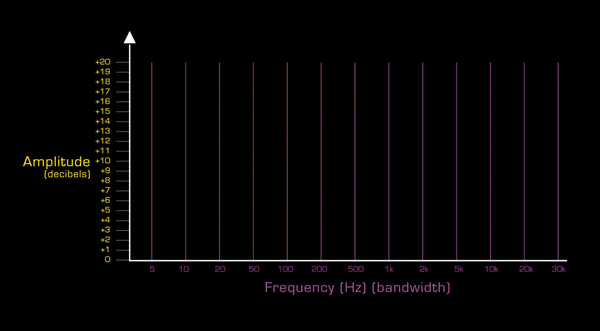
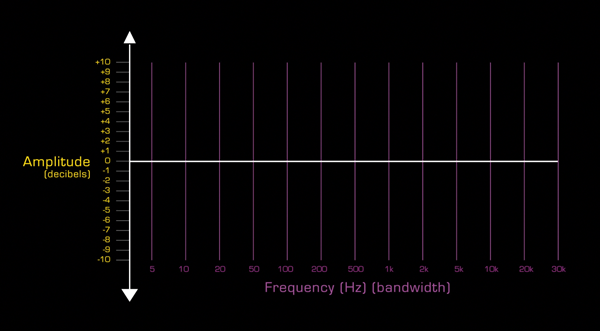
A line, plots the amplitudes of the different frequencies.
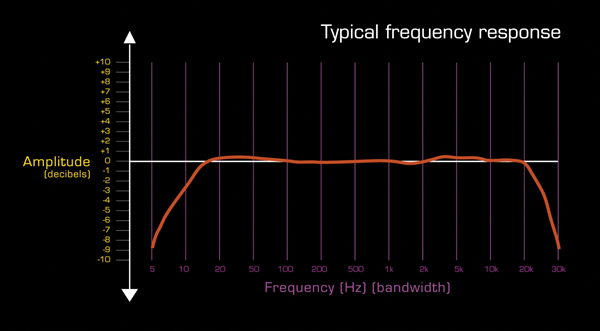
Caption - Visualising the frequency response of a device
If the diagram is being used to show a device's frequency response, including how close it is to flat and where it's response deviates from flat, it will have a bi-polar amplitude axis so that frequencies that will be boosted or cut can be shown.

To test a device's frequency response, a test tone containing multiple frequencies at equal amplitudes, typically between 10Hz and 30kHz , is sent to the device. The output is then analysed to see which frequencies have been altered.
This example shows that a device will pass most frequencies unaffected, boost the level of frequencies at 1kHz a little, but is unable to handle frequencies below 30Hz or above 15kHz both of which will be cut.
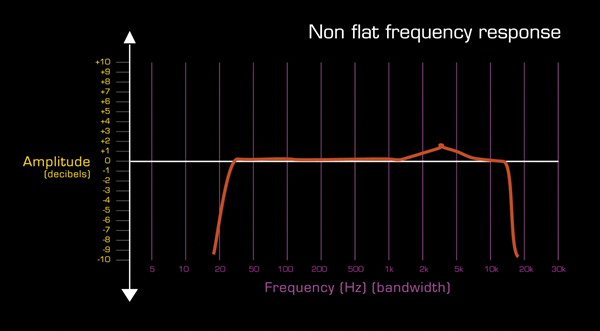
Caption - Flat frequency response
Flat frequency response means that a device does not change the level of the frequencies in an audio signal passing through it. In practice, very few audio devices in the studio achieve flat frequency response although some, such as analogue to digital converters, get very close.
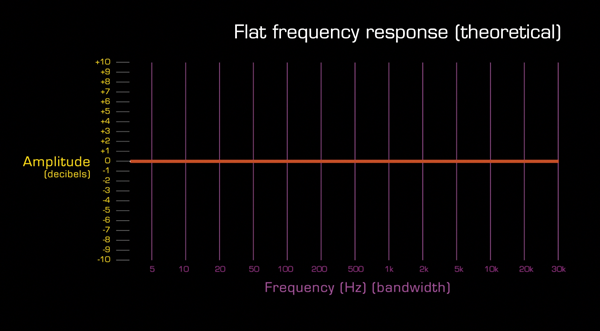
Caption - 'Enhancing' a sound
Device manuals often contain frequency response diagrams to show how a sound will be enhanced, perhaps in order to add 'character' or warmth. This is very often a device's unique selling point.
This diagram show the frequency response of a microphone designed to have a specific 'character'.
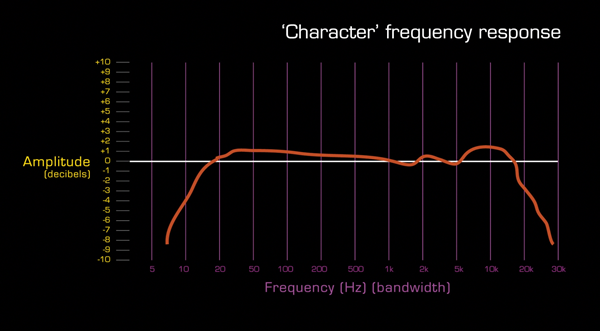
Caption - Range of changes
Some devices, such as equalisers, are designed to allow a user to control the frequency response by setting the amount of cut and boost. that a filter will apply. In this case the device's manual will show the range of changes that can be applied.
This example shows the range of frequencies and the amount of cut and boost available from an equalisers mid-range filter.
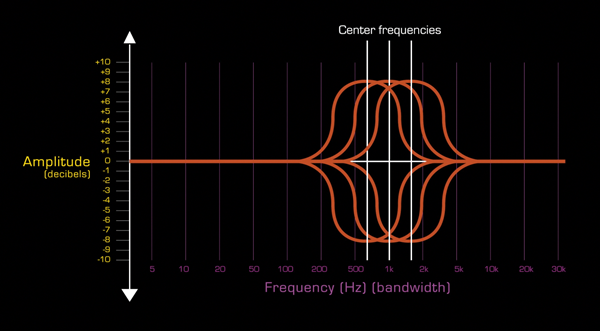
This example shows a sound that has been EQ'd to reduce its mid range frequencies.
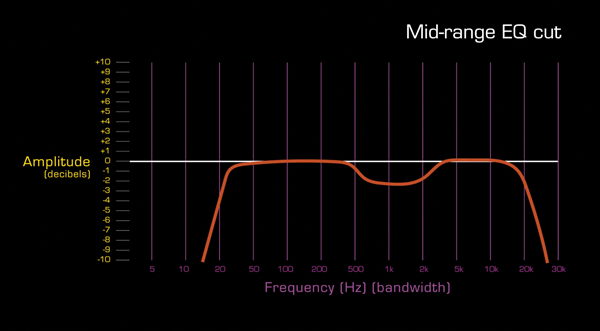
Caption - Visualising frequencies in a sound wave
There is a simpler version of the frequency response diagram which simply shows the relative amplitudes of all the harmonics, or frequencies in a sound wave.
In such a diagram the amplitude axis is not bi-polar and simply increases from 0 upwards. This type of diagram is useful for visualising the balance of bass, midrange and treble in a sound or a completed mix.
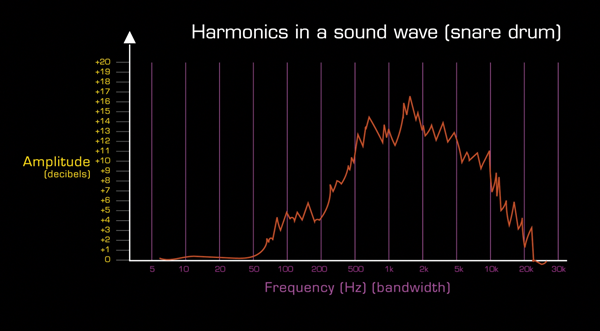
Caption - Thanks for watching
The script for this video, with accompanying images, can be found at projectstudiohandbook.com
We suggest you subscribe at our YouTube channel, and join our mailing list at our website to receive notification of new videos, blog posts and subscriber only extras.
Thanks for watching.